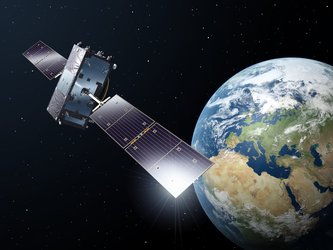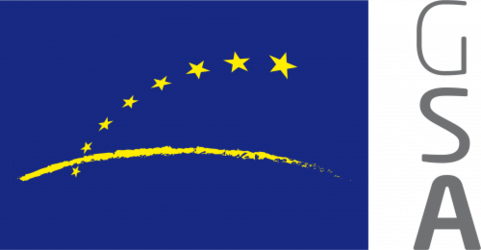Call for Media: Galileo 19–22 ready for launch
The next four Galileo satellites are scheduled for launch on 12 December at 18:36 GMT (19:36 CET, 15:36 local time) from Europe’s Spaceport in Kourou, French Guiana atop an Ariane 5 rocket.
This launch will bring the total Galileo constellation to 22, boosting the global availability of navigation signals. Galileo began initial services on 15 December 2016, the first step towards full operations.
Media are invited to take part in an audio briefing on 11 December at 16:30 GMT (17:30 CET) to learn the latest on the status of the system. Journalists interested in joining the briefing should request access information via email to ESA’s Media Relations Office at: media@esa.int by 08 December at the latest.
Covering the launch
ESA TV
In cooperation with Arianespace, ESA TV provides broadcasters with free live videostream of the launch. More information at: http://www.esa.int/esatv/Television
Website
ESA’s Portal will cover the launch live on www.esa.int, providing the web stream and updates of the launch.
Images
The latest high-resolution images can be found at:
ESA’s Multimedia Gallery: http://spaceinimages.esa.int/Images
ESA's Photo Library for Professionals: http://www.esa-photolibrary.com
Media image queries can be directed to spaceinimages@esa.int
Social media
Twitter: @ESA and the hashtag #Galileo
In addition, there will be updates on:
Facebook: https://www.facebook.com/EuropeanSpaceAgency
Google+: https://plus.google.com/+EuropeanSpaceAgency
YouTube: https://www.youtube.com/ESA
About Galileo
Galileo is Europe’s own satellite navigation system, consisting of both the satellites in space and their associated ground infrastructure, to provide an array of positioning, navigation and timing services to Europe and the world.
The definition, development and in-orbit validation phases were carried out by ESA, and co-funded by ESA and the European Commission. This phase created a mini-constellation of four satellites and a reduced ground segment set up to validate the overall concept, ahead of further deployment.
The current Full Operational Capability phase is fully funded by the EU and managed by the Commission. The Commission and ESA have a delegation agreement by which ESA acts as design and procurement agent on behalf of the Commission.
Learn more about Galileo at:
About the European Space Agency
The European Space Agency (ESA) provides Europe’s gateway to space.
ESA is an intergovernmental organisation, created in 1975, with the mission to shape the development of Europe’s space capability and ensure that investment in space delivers benefits to the citizens of Europe and the world.
ESA has 22 Member States: Austria, Belgium, the Czech Republic, Denmark, Estonia, Finland, France, Germany, Greece, Hungary, Ireland, Italy, Luxembourg, the Netherlands, Norway, Poland, Portugal, Romania, Spain, Sweden, Switzerland and the United Kingdom. Slovenia is an Associate Member.
ESA has established formal cooperation with six Member States of the EU. Canada takes part in some ESA programmes under a Cooperation Agreement.
By coordinating the financial and intellectual resources of its members, ESA can undertake programmes and activities far beyond the scope of any single European country. It is working in particular with the EU on implementing the Galileo and Copernicus programmes as well as with Eumetsat for the development of meteorological missions.
ESA develops the launchers, spacecraft and ground facilities needed to keep Europe at the forefront of global space activities.
Today, it develops and launches satellites for Earth observation, navigation, telecommunications and astronomy, sends probes to the far reaches of the Solar System and cooperates in the human exploration of space. ESA also has a strong applications programme developing services in Earth observation, navigation and telecommunications.
Learn more about ESA at www.esa.int
For further information, please contact:
ESA Media Relations Office
Email: media@esa.int
Tel: +33 1 53 69 72 99















 Germany
Germany
 Austria
Austria
 Belgium
Belgium
 Denmark
Denmark
 Spain
Spain
 Estonia
Estonia
 Finland
Finland
 France
France
 Greece
Greece
 Hungary
Hungary
 Ireland
Ireland
 Italy
Italy
 Luxembourg
Luxembourg
 Norway
Norway
 The Netherlands
The Netherlands
 Poland
Poland
 Portugal
Portugal
 Czechia
Czechia
 Romania
Romania
 United Kingdom
United Kingdom
 Slovenia
Slovenia
 Sweden
Sweden
 Switzerland
Switzerland
































